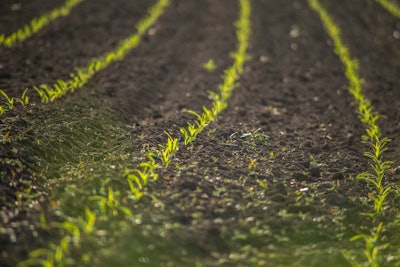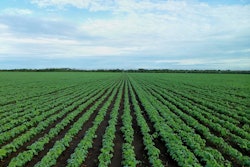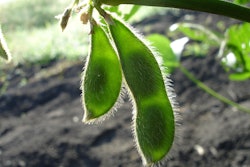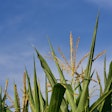
The Purdue University-CME Group Ag Economy Barometer, a leading indicator of U.S. farmer sentiment, recorded a reading of 114 in December, just one point lower than the preceding month. This slight decline reflects the overall stability in farmers' perception of the agricultural economy. The barometer comprises two sub-indices, the Index of Current Conditions and the Index of Future Expectations, both of which also fell by one point compared to November.
Current conditions and future expectations
The Index of Current Conditions for December stood at 112, indicating a modest improvement in farmers' perception of their farms' financial performance. This increase aligns with the recent upward revision of the U.S. Department of Agriculture's (USDA) forecast for 2023 net farm income. Despite a projected decline in net farm income from the record-high levels of 2022, the November estimate for 2023's inflation-adjusted net farm income was $10 billion higher than the forecast issued in August.
Similarly, the Index of Future Expectations decreased to 115, suggesting a slightly less optimistic outlook among farmers for the coming months. However, both the Current Conditions and Future Expectations indices were weaker compared to December 2022, with the Ag Economy Barometer falling 10% below the previous year's level.
Inflation expectations and interest rates
Looking ahead to 2024, U.S. farmers' expectations for inflation have significantly moderated since the beginning of 2023. In December, only 13% of survey respondents anticipated consumer inflation to be 6% or higher, whereas 70% expected inflation to be less than 4% in the upcoming year. This decrease in inflation expectations can be attributed to various factors, including the overall stabilization of the economy and the USDA's revised forecasts.
Furthermore, farmers expressed a more positive outlook regarding interest rates. Approximately 34% of respondents believed that interest rates would decline in 2024, while 22% expected them to remain unchanged. This sentiment reflects the potential for favorable borrowing conditions and the potential impact on farmers' investment decisions.
Farm capital investment and financial performance
The Farm Capital Investment Index remained relatively unchanged in December, indicating that farmers' perspectives on making large investments in their operations remained consistent. Key factors supporting this sentiment included higher dealer inventories and strong cash flows. Although the percentage of respondents citing strong cash flows as a reason to invest rebounded from the previous month, it remained less popular than in July and August. Conversely, the percentage of farmers considering higher dealer inventories as a primary reason to invest more than doubled from July to December.
Farmers also perceived continued improvement in their farms' financial performance, as evidenced by the 2-point increase in the Farm Financial Performance Index compared to the previous month. This upward trend aligns with the USDA's revised forecast for 2023 net farm income and highlights the resilience of the agricultural sector.
Concerns and expectations
High input costs continue to be the primary concern for U.S. farmers. However, there has been a noticeable shift in farmers' apprehensions throughout the year. In January, only 16% of respondents pointed to the risk of lower crop and/or livestock prices as a significant concern. By December, this figure had risen to 26%. Rising interest rates were also a major concern, cited by 24% of survey participants.
Both the short-term and long-term farmland value indices experienced moderate declines in December. The Short-Term Farmland Value Index fell by 4 points to a reading of 121, while the long-term index declined by 2 points to 149. However, compared to December 2022, the short-term index was only down by 3 points, while the long-term index was 9 points higher. This relative improvement in the long-term index may be attributed to the moderation of interest rate expectations since late 2022.
The latest Purdue University-CME Group Ag Economy Barometer reveals that U.S. farmers' sentiment remained stable in December. While concerns about high input costs persist, farmers' expectations for inflation have moderated. The report highlights the resilience of the agricultural sector, as reflected in farmers' improved perceptions of their farms' financial performance. Looking ahead to 2024, farmers express a more optimistic view of interest rates. These findings provide valuable insights into the current state of the agricultural economy and offer guidance for farmers and policymakers alike.

















